2021 Kia Seltos Turbo Vs 2020 Mazda CX-30 Comparison

In its second AutoGuide comparison, the Kia Seltos is picking on something its own size. Step forward, Mazda CX-30.
With the available 1.6-liter turbo engine, this bright yellow Kia Seltos would’ve made short work of the Toyota C-HR and Mazda CX-3 we pitched its non-turbo trim against last month. That trio was well-matched on price, and the abundance of space the Seltos provided over its pint-size competition made it the one we’d recommend for small families.
Get a Quote on a New Kia Seltos vs Mazda CX-30For this small SUV face-off, we’ve tagged in Mazda’s CX-30. Slotting between the little CX-3 and the compact CX-5, the CX-30 is a more direct competitor for the Seltos in terms of size and price. Can Mazda’s premium-feeling ‘ute outshine the practical Kia? Let’s find out.
Powertrain and driving feel
Seltos: The turbo four-pot of the Seltos is in absolutely everything across the Hyundai Motor Group. It’s in here, the Forte, the Hyundai Veloster, the upcoming crop of hybrids from both companies—it might even be powering the coffee machines at dealers.
Kia has a very “if it ain’t broke” approach with the 175-horsepower 1.6-liter. It doesn’t produce a thrilling noise because that isn’t its job: plentiful low-down torque is. A thick slug of the stuff (195 lb-ft) shows up barely off idle, at 1,500 rpm. With a seven-speed dual-clutch transmission sending power to all four corners, the Seltos moves off the line smartly. Gear shifts are smooth too, better than earlier iterations of this pairing.
Managing editor Kshitij has been both Seltos’ keeper during their time with AutoGuide. As the family man, he’s put the Turbo to the test in the real world, and the results are surprising. First off, he prefers the urban ride in the Seltos 2.0: “It sacrifices in city ride comfort for better highway stability,” explains Kshitij, “which is a bummer as it is a city vehicle.” Around town the Seltos feels wooden and agitated. The Turbo is more composed on the highway than its lesser-powered sibling, but the trade-off there is more road noise finding its way into the cabin. Thank the larger 18-inch wheels and wider 235-section rubber (the 2.0 runs 215/17s at all four corners).
CX-30: Mazda is one of the few automakers to limit its adoption of turbocharging. Instead of a small-displacement, forced-induction four, it sticks to big displacement. The 2.5-liter engine produces more power than the Seltos (186 hp), but does so higher up the rev range. Torque is also 186 (lb-ft), and doesn’t show up to the party until 4,000 rpm. Like the Kia, the CX-30 puts its power to all four wheels, though it does so via a conventional six-speed automatic.
Out on the road, the CX-30 feels the quicker of the two. It seems impossible: at 3,366 lb (1,528 kg) it’s lugging around slightly more than the Seltos’ 3,317-pound (1,505 kg) curb weight. The Mazda is down a gear too. Chalk it up to that atmospheric engine: quicker to respond and with a more progressive powerband, it’s the more involving setup.
The Mazda’s extra ride height doesn’t hinder its handling. It’s crisp and composed, feeling every bit the high-riding Mazda3 it practically is. It feels a little aloof on the highway, but overall it’s better balanced than the Seltos. My biggest issue with the Mazda is its auto-on electronic parking brake. It activates at shutdown, but requires a manual prod of the button on every startup. One or the other, Mazda!
Bottom Line: Mazda has a long-standing reputation for driving enjoyment, and the CX-30 continues that here. It’s more mature than previous Mazdas—and the level the Seltos wishes it could be—yet it still can have fun when the mood strikes. The first win of the competition goes to Japan.
Fuel economy
Seltos: Opting for turbo power doesn’t come with much of a penalty in the Seltos. The 1.6T averages 27 mpg (8.7 L/100 km), split between 25 city and 30 highway mpg (9.4 and 7.9 L/100 km, respectively). During our time with it, those numbers proved accurate. There’s no front-drive option for the turbo Seltos either, if you’re looking to eke out a few extra mpg in warmer climes.
CX-30: The CX-30 can surpass the Seltos’ fuel economy rating, but not in this trim. Our mid-level tester is missing out on the cylinder deactivation of the highest trim. Thus equipped, the EPA quotes the CX-30 AWD at 24 city, 31 highway, and 26 combined mpg. Canadian figures are 9.9, 7.7, and 8.9 L/100 km, respectively. Our time with the CX-30 skews closer to the highway figure: it averaged a little shy of 29 mpg (8.2 L/100 km).
Mazda does offer the 2.5-liter in front-drive form, with and without cylinder deactivation. That’s good for a few more mpg, if you don’t need or want the all-paw grip.
Bottom Line: We can’t argue numbers here: the Seltos squeaks ahead, at least with the two trims we have for testing.
Technology and Features
Seltos: Stepping up to the SX trim doesn’t just add power under the hood: it adds a whole bunch of big-car tech to the little Seltos. It starts with full LED lighting outside, including the foglights. Inside, a larger 10.25-inch touchscreen sits in the middle of the dash. It runs the latest version of Kia’s UVO system, making it incredibly customizable, and including remote connectivity. Remote start is available via the key. An uprated Bose sound system is exclusive to the SX Turbo as well. So is, rather unexpectedly, the auto-dimming rearview mirror.
A wireless mobile charger sits in the dash. If you need more juice, there are USB slots in the front and back. The driver can enjoy a 10-way power-adjustable throne; the passenger has less adjustments, but at least it’s still powered, unlike the Mazda. The front row is heated and ventilated too.
CX-30: Every CX-30 trim comes with full LED lighting. Like the Seltos, the leatherette front seats are heated, though not ventilated. The driver’s seat is also 10-way power-adjustable; the passenger seat is manual however. There’s a memory system for the driver seat at least.
Curiously, Mazda doesn’t offer a wireless charging pad on any CX-30 trim. The eight-speaker sound system matches the Bose system of the Kia for us. The Mazda offers a 12-speaker Bose system of its own, but our tester doesn’t have it.
Then there’s the most controversial part of the Mazda’s tech suite: the infotainment setup. Nevermind that it’s working with less real estate: the screen is 8.8 inches across. Thanks to its ultra-widescreen format, it feels like you’re working with barely over half the screen of the Seltos.
No, the bigger issue for some folks will be the complete lack of touchscreen capability. This isn’t accidental: Mazda has said it made the move for driver safety concerns, as touch screens require more focus. The Japanese company even found some people will drift in their lane as they reach to poke at a screen.
We get all of that, and we applaud Mazda for thinking long-term about its drivers’ safety. But that doesn’t detract from the infotainment being more cumbersome to use—even for the passenger. Both Android Auto and Apple CarPlay are built around touch interfaces, so you’ll need to spin that center controller around a bit to navigate them. Does it get easier? Eventually.
Bottom Line: The Seltos wins another round here. It offers more tech than the Mazda, including a much larger central infotainment screen. Mazda deserves credit for its safety-focused approach to infotainment, but it still results in a system more frustrating for passengers to use. The system itself also lacks the deep customization of Kia’s setup.
Safety
Seltos: Other than the base LX trim, Seltos models come with a healthy list of standard safety equipment. This includes the usual active driver aids, such as automated emergency braking, lane-keep assist, lane departure warning, auto headlights, and driver attention warning. Blind spot collision avoidance shows up on the EX trim and upwards, along with rear cross-traffic support. Smart cruise control doesn’t show up until this SX Turbo model, though.
The Seltos scores a solid four-star rating from the NHTSA for its frontal testing, and five stars for every permutation of the agency’s side crash test. Over at the IIHS, the Seltos earns a “Good” rating on nearly every category, save headlights (“Poor”) and LATCH ease of use (“Acceptable”).
CX-30: Even in absolute base form in the US, the CX-30 includes all the usual active driver aids. Automated emergency braking, driver attention alert, lane-keep assist and departure warning, auto high beams, adaptive cruise control—it’s all here. Blind spot monitoring shows up in the Preferred and Premium, while the latter also gains adaptive headlights.
On the all-important crash-test rating front, the NHTSA awarded Mazda with a full lineup of five-star ratings for the CX-30. Similarly, the IIHS named the CX-30 a Top Safety Pick for 2020. That’s dependent on trim: curiously, it’s the lower trims that earn the higher mark (for headlights), so our tester not being the highest trim works to its benefit here.
Bottom Line: With more standard safety features and better ratings from both the NHTSA and IIHS, it’s safe to call this category in favor of the Mazda.
Interior and Cargo Space
Seltos: The Seltos’ interior is spacious, if workmanlike. The artificial leather on the seats feels good, with the perforated pattern lifting the look up. We found the back seats more spacious in the Seltos too—especially in legroom—but its seat backs felt too flat. The Mazda’s second row seats are comfier, there’s just less room around them.
There’s nothing inherently wrong with the Seltos’ cabin. It just feels built to a price, specifically around the center console. The dinky little central armrest is an odd one, too. The dash design is plain, with no real flow from it to the door panels. Those do house the Seltos’ coolest interior feature, though, with the funky geometric speaker covers drawing the eye.
The square shape of the Seltos’ passenger compartment provides plenty of space for people and their things. Pop the trunk and the load floor is wide and low. Kia quotes 26.6 cubic feet of storage (753 L), which grows to a massive 62.8 (1,778 L) with the seats down. That’s more than a Ford Escape.
SEE ALSO: 2020 Ford Escape Hybrid vs 2020 Toyota RAV4 HybridCX-30: I challenge you to find a more visually impressive interior in this segment for under $40,000. Mazda has been angling for a seat at the semi-premium club for a few years now, and the CX-30 is the latest example. The dark blue and greige color combination is classy and special in the face of the Seltos’ all-black utilitarianism. Mazda’s designers have kept the dash design uncluttered, with only the necessities remaining, thankfully with physical controls. That leather-wrapped steering wheel is just perfect, too.
The front seats are plainer than the Seltos’, but are just as comfortable. Both cars use faux-leather for the seating surfaces, and both are convincing.
As you’d expect given its swoopy shape, the CX-30 has tighter quarters for rear-seat passengers. Noggins will make contact with the roof for those over 6’0″. The tiny quarter-window behind second-row occupants’ heads does little to let extra light in either.
All that style requires a sacrifice, and the CX-30 offers up its trunk as tribute. Its 20.2 cubic feet (572 litres) is fine enough for the grocery run or a couple’s vacation, but it’s much smaller than the Kia. With just the front seats up, the gap grows to a chasm: the CX-30 manages just 45.2 cubes (1,280 L).
SEE ALSO: 2021 Kia Seltos EX Review: Where Do Its Priorities Lie?Bottom Line: The CX-30 might be closer in size to the Seltos than the CX-3 and Toyota C-HR from the last comparison, but it still can’t swallow as much as the Korean crossover. The Seltos is the indisputable king of the space race here. With its blocky shape and low window line, the Kia offers a plenty of space for friends or family.
It out-points the Mazda for storage space too, by offering roughly 33 percent more room, seats up or down.
But this is Interior and Cargo Space. On the former front the Mazda is the clear winner. Its cabin feels genuinely premium: we’d go so far as to say it’s better than certain premium compact SUVs’ innards.
Call this one a draw, ladies and gentlemen.
Styling
Seltos: The Seltos is like an average action movie with an excellent trailer: what you see first sets a strong first impression, but the rest never quite matches up. The jewel-like headlights are cool, and the LED strip running right to the center of that Tiger Grille gives it an unmistakably late-night identity. Both Kshitij and I rate the Seltos’ 18-inch wheels as the better alloys, too. The texture on the nose’s brightwork is interesting, though it seems to scuff and fade very quickly. And props to Kia for actually offering the Seltos in this shade of yellow. It’s a good one.
As your eyes move back across the Seltos’ flanks, it loses that distinctiveness. A shoulder line returns mid-way through the rear doors, running through the taillights and lining up with the chrome fillet on the tail. The chrome strip running under the windows ends abruptly, cut off by the tailgate. It’s the straight-on rear view that hurts most though: remove the badge and this could be one of any number of manufacturer’s compact crossovers.
CX-30: You’re not going to confuse the CX-30 for anything other than a Mazda. Okay, there’s something Italian—almost Alfa-esque—about its tail. But overall, this little SUV certainly looks like a part of the family. The low-set headlights look aggressive, even with the metallic mustache cradling them.
We like the complete lack of creases in the CX-30’s flanks. Around back, the taillights are sharp, which contrasts nicely with the soft fade of the turn signal repeater. The modest exhaust tips are also a refreshing bit of simplicity.
The CX-30 isn’t perfect, though. The heavy-handed plastic cladding cheapens the look, and the 18-inch alloy wheel design is boring.
Bottom Line: Both of us respect the Kia, but we like the Mazda.
Pricing
Seltos: Befitting its spot at the top of the Seltos model walk, the SX Turbo comes with nearly everything Kia could throw at it as standard. Our Canadian-spec tester comes with everything the US model does, though the sunroof is optional south of the border. It lists for $29,710, including destination ($34,640 in Canada). Canadian models also gain a heated steering wheel and heated rear seats.
CX-30: Our tester is the Canadian-spec GS with Luxury Package—roughly equivalent to the CX-30 Preferred Package in the US, though without the 12-speaker Bose system. It undercuts the Seltos slightly, with a destination-included price of $29,295. That includes a sole option: the Soul Red paint, natch. Canadian pricing is $32,950: Mazda throws a heated steering wheel into the package too.
Bottom Line: As tested, these two are close. Both pack in value in different ways: the Seltos has more toys, whereas the CX-30 feels more high-quality. With that being the case, the CX-30 gets the nod here for its lower list price.
Verdict: 2021 Kia Seltos SX vs 2020 Mazda CX-30 Comparison
In the last comparison, the 2.0-liter Seltos held a clear advantage. If you were buying a small SUV for your young family, it had the others clearly licked in terms of features and space.
The Seltos is still the victor by those metrics here too. It comes with more tech than the Mazda, and it’s more user-friendly. Space is a closer fight: there isn’t much in it for passengers, but the Kia trounces the swoopy Mazda for trunk space.
That’s the thing though: the Mazda is seriously stylish. It looks expensive—big plastic wheel arches aside—and that feeling continues once you get inside. Mazda’s interior designers have leapfrogged those at actual premium marques and produced a rich, calming cabin.
SEE ALSO: 2020 Mazda MX-5 Miata Review: Ooh-Ooh What a FeelingThe CX-30 also drives better. That shouldn’t be at all surprising.
As much as we all like to attribute the crossover’s popularity with its practicality, the truth remains that choosing cars—even family haulers—is a subjective matter. The Kia might have the numbers, but the Mazda has that tough-to-nail-down feeling. And it doesn’t give up enough in the numbers game to detract from that. The Mazda CX-30 wins this comparison.
Become an AutoGuide insider. Get the latest from the automotive world first by subscribing to our newsletter here.

Kyle began his automotive obsession before he even started school, courtesy of a remote control Porsche and various LEGO sets. He later studied advertising and graphic design at Humber College, which led him to writing about cars (both real and digital). He is now a proud member of the Automobile Journalists Association of Canada (AJAC), where he was the Journalist of the Year runner-up for 2021.
More by Kyle Patrick



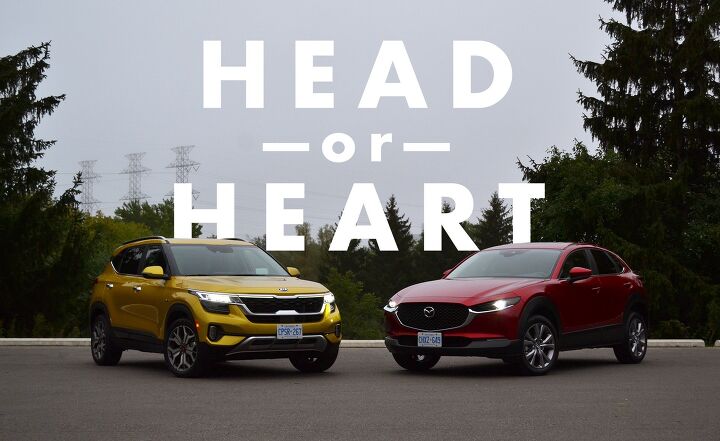





























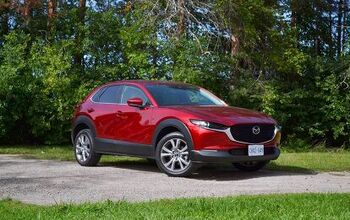


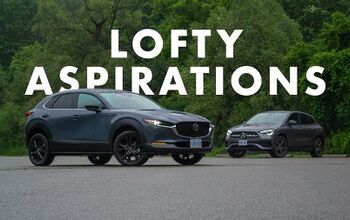


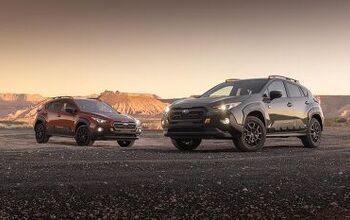






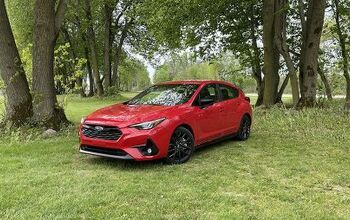
Comments
Join the conversation